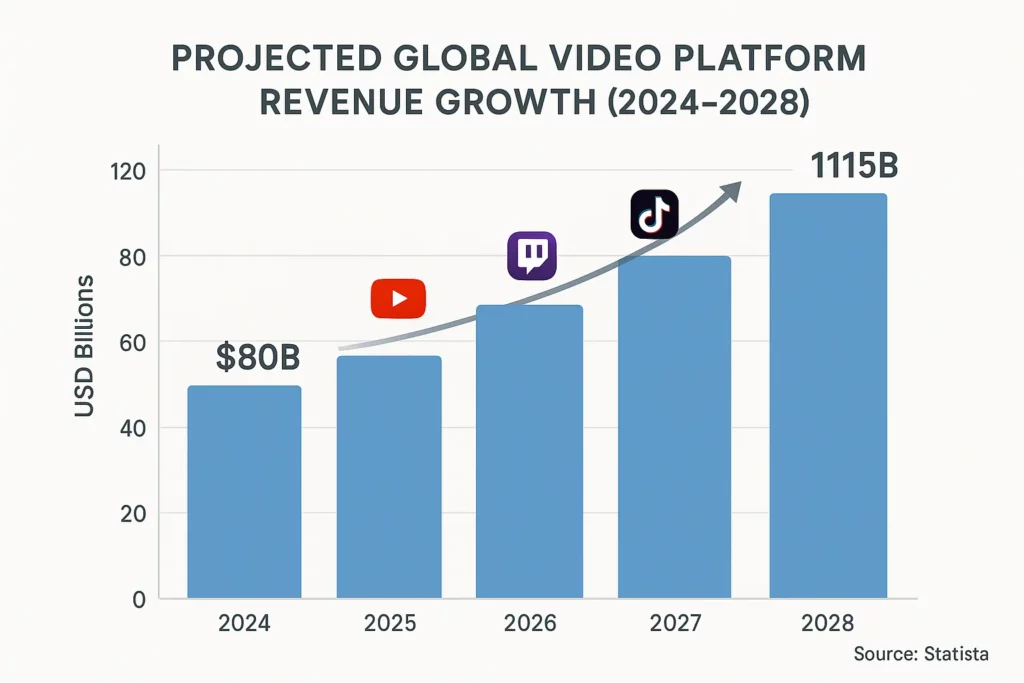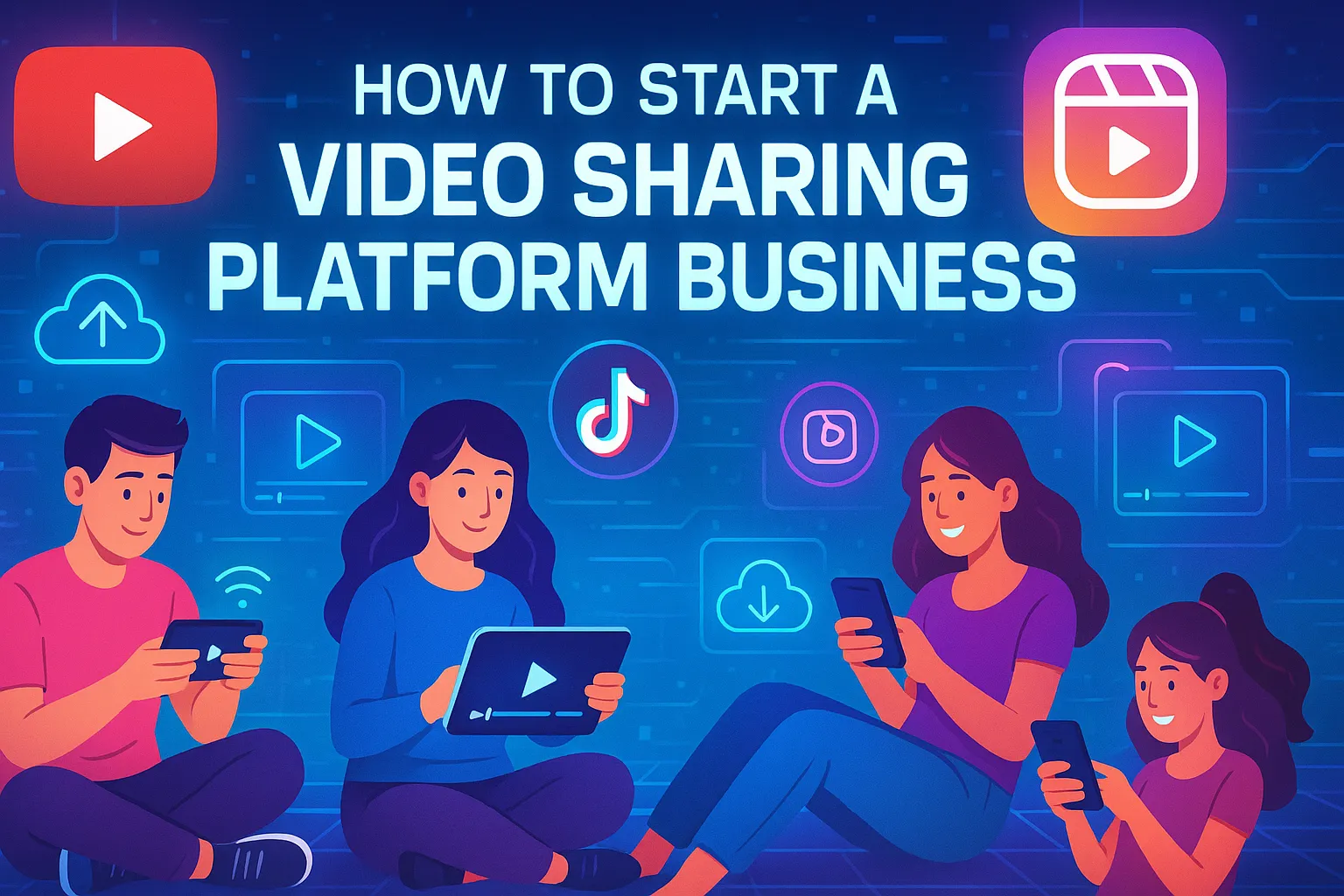Ever caught yourself binge-watching YouTube shorts at 2 AM, swearing you’d stop after “just one more”? Yeah, same here. Video content is addictive — and guess what? That addiction is big business. For creators, influencers, and even budding entrepreneurs, video platforms are more than entertainment; they’re a goldmine of community, creativity, and cash flow.
The real kicker? You don’t need to invent the next YouTube from scratch. If you’ve got vision, drive, and the right tech partner, you can absolutely carve out your own slice of the video-sharing pie. Think niche content, regional languages, or even creator-first monetization models. The opportunities are wild — especially with Gen Z and Gen Alpha glued to screens like bees on honey.
Whether you want to build the next TikTok for pet lovers or a hyper-local version of Instagram Reels, understanding the nuts and bolts is key. Let’s unpack how you can start your own video sharing platform business, and how Miracuves can quietly turn your idea into a streaming powerhouse.
Why Video Sharing is a Billion-Dollar Playground
Video content is now the undisputed king of online engagement. From micro-vlogs to 10-minute tutorials, people crave visual storytelling. According to Statista, global video streaming revenue is projected to exceed $115 billion by 2026. That’s not just growth — that’s a digital gold rush.
Why is video booming?
- Smartphones + 4G/5G = frictionless creation and consumption
- Users prefer visual over textual content (hello, short attention spans!)
- Monetization tools like ads, tipping, and subscriptions make creators loyal
- Regional content drives hyper-engagement in local languages

Types of Video Sharing Platforms (With Real-World Examples)
Before you build, you gotta choose your battlefield. Here’s a quick breakdown:
1. Short-Form Video Apps
Think TikTok, Instagram Reels, YouTube Shorts. These thrive on quick dopamine hits and viral trends.
- Best for: Entertainment, challenges, reactions
- Key Features: Swipe feed, sound sync, duet/collab, filters
2. Traditional Video Platforms
Hello, YouTube! Long-form content, tutorials, vlogs, and everything in between.
- Best for: Educational, review, and lifestyle content
- Key Features: Channel subscriptions, playlists, ad monetization
3. Livestreaming Platforms
Like Twitch or Bigo Live — interactive and real-time.
- Best for: Gaming, live Q&A, concerts
- Key Features: Live chat, tipping, badges, moderation
4. Niche/Community-Based Platforms
Examples: Rumble (alt-media), Nebula (creators-first), or even regional platforms like Moj or Chingari in India.
- Best for: Targeted audiences with specific content needs
- Key Features: Personalization, community tools, curated feeds
Must-Have Features for a Successful Video Sharing App
Starting a video platform isn’t just about letting people upload clips. Here’s what you really need under the hood:
Content Upload & Management
- Support multiple formats (MP4, MOV)
- Auto-encoding for different resolutions
Discovery & Engagement
- Smart recommendations (AI/ML)
- Trending tags, hashtags, “For You” feed
Social Features
- Likes, shares, comments, reactions
- Follower system and notifications
Monetization Tools
- Ads (pre-roll, mid-roll)
- Creator tips, coin systems, subscriptions
Security & Moderation
- Report/block users
- AI-based content moderation
Monetization Strategies: Turning Views Into Revenue
Let’s talk about making money. Your platform should serve both you and your creators. Win-win.
Platform Owner Revenue:
- Ad Revenue: Google AdSense-style integration
- Premium Features: Paywalls, in-app purchases
- Brand Collaborations: Featured content or campaigns
Creator Revenue:
- Tipping: Viewers send coins or real money
- Subscriptions: Paid channels for exclusive content
- Affiliate Links: Direct traffic to product purchases
How to Build Your Own Video Sharing App (Without Losing Your Mind)
You’ve got three paths here:
1. Build From Scratch
High cost, long time, and needs a solid dev team.
2. Use Off-the-Shelf Software
Fast but often rigid. Limited customization.
3. Use a Clone App Development Partner Like Miracuves
Faster time-to-market + full customization + reliable backend = smart play.
Tech Stack You’ll Need
- Frontend: React Native, Flutter (for mobile); React.js (for web)
- Backend: Node.js, Laravel, Python
- Database: PostgreSQL or MongoDB
- Cloud & Hosting: AWS, Firebase, Cloudflare
- Media Processing: FFmpeg, AWS MediaConvert
Real-Life Case Study: Regional Video App Explosion
Moj and Josh in India exploded post-TikTok ban — not by reinventing the wheel but by knowing their audience. They focused on:
- Local language UI
- Simple UX
- Strong creator incentives
In 2023 alone, Moj clocked 160M+ downloads. That’s not a fluke — it’s smart positioning.
Conclusion
The demand for video platforms is only getting stronger — and more specialized. Niche is the new mainstream. Whether you’re a startup founder with a big idea or a creator looking to empower your community, there’s space for you in this booming digital frontier.Dreaming of your own video-sharing empire? Miracuves has your back — from concept to launch, we build powerful, revenue-ready clone apps that scale with your vision. It’s time to stop scrolling and start building. Let’s create something epic together.
FAQs
Q1. How much does it cost to start a video sharing platform?
Costs vary, but clone-based solutions from Miracuves can significantly reduce development time and budget.
Q2. Can I build a video platform just for my city or language?
Absolutely! Hyper-local platforms like Moj prove there’s huge demand in regional markets.
Q3. How do video apps make money?
Through ads, in-app purchases, creator subscriptions, and partnerships.
Q4. Is it legal to build a clone of YouTube or TikTok?
Yes — as long as you’re building a unique platform with your own branding and features. Cloning refers to functionality, not infringement.
Q5. What backend is best for video-heavy platforms?
A scalable backend like Node.js with AWS or Firebase hosting is ideal.
Q6. How long does it take to launch?
MVPs developed by Miracuves are launched in just 3–6 days with guaranteed delivery, covering complete setup, customization, and deployment.








